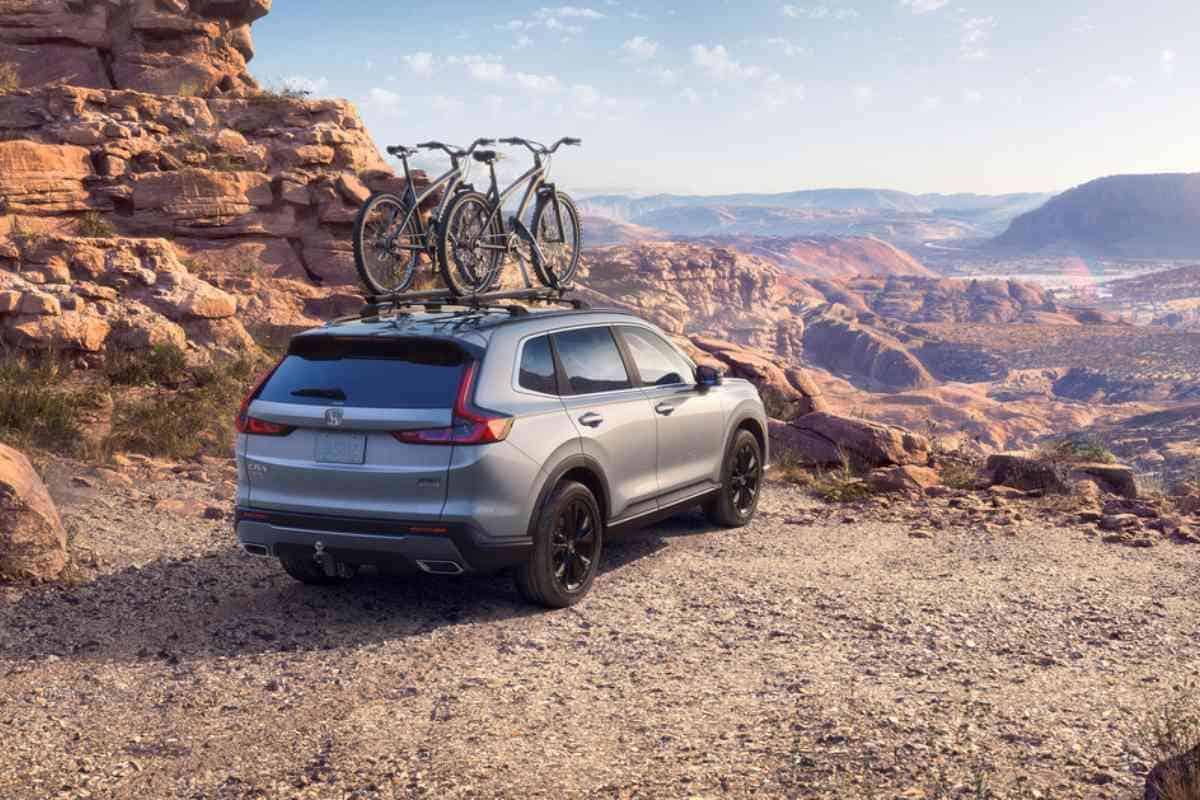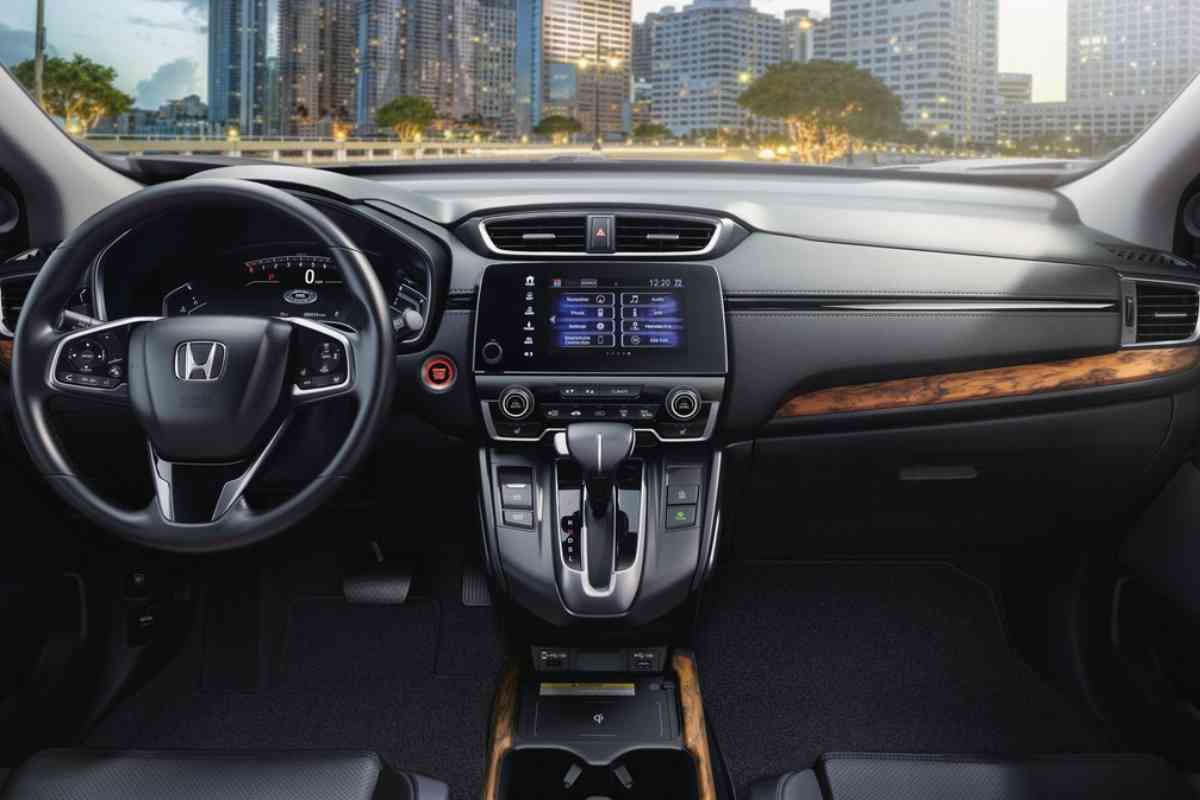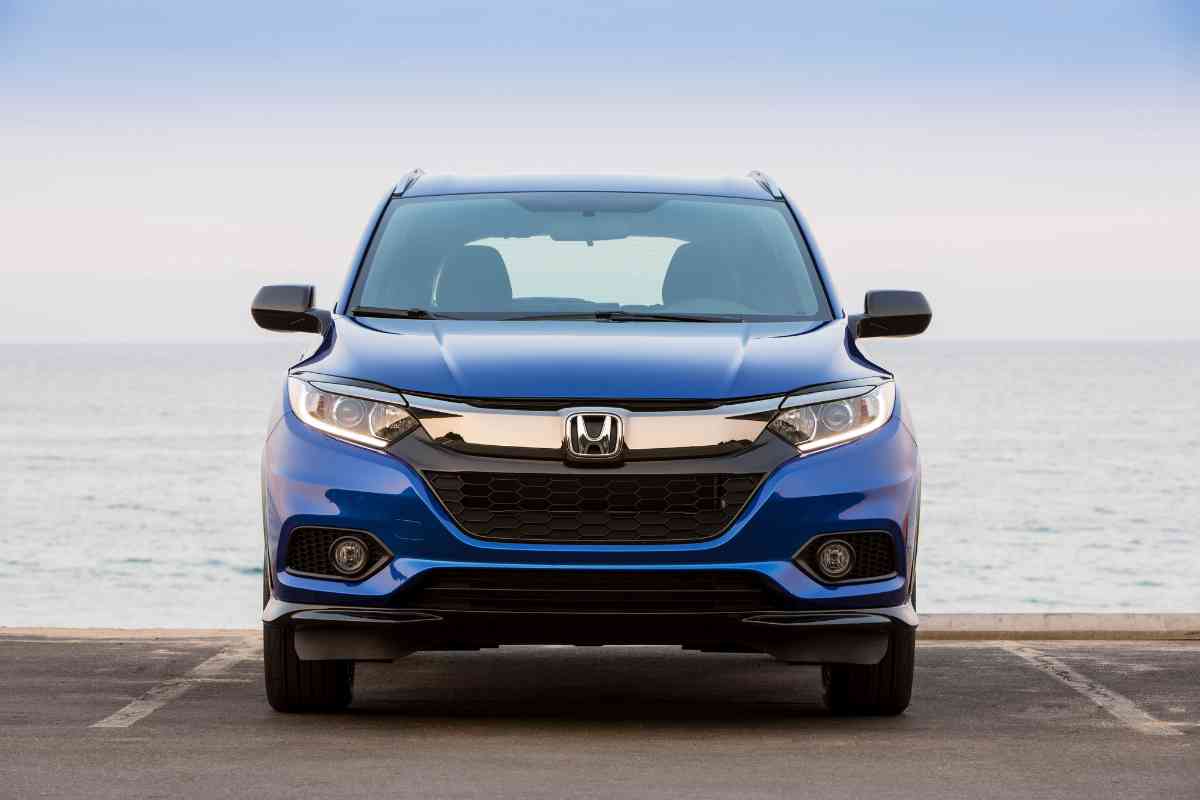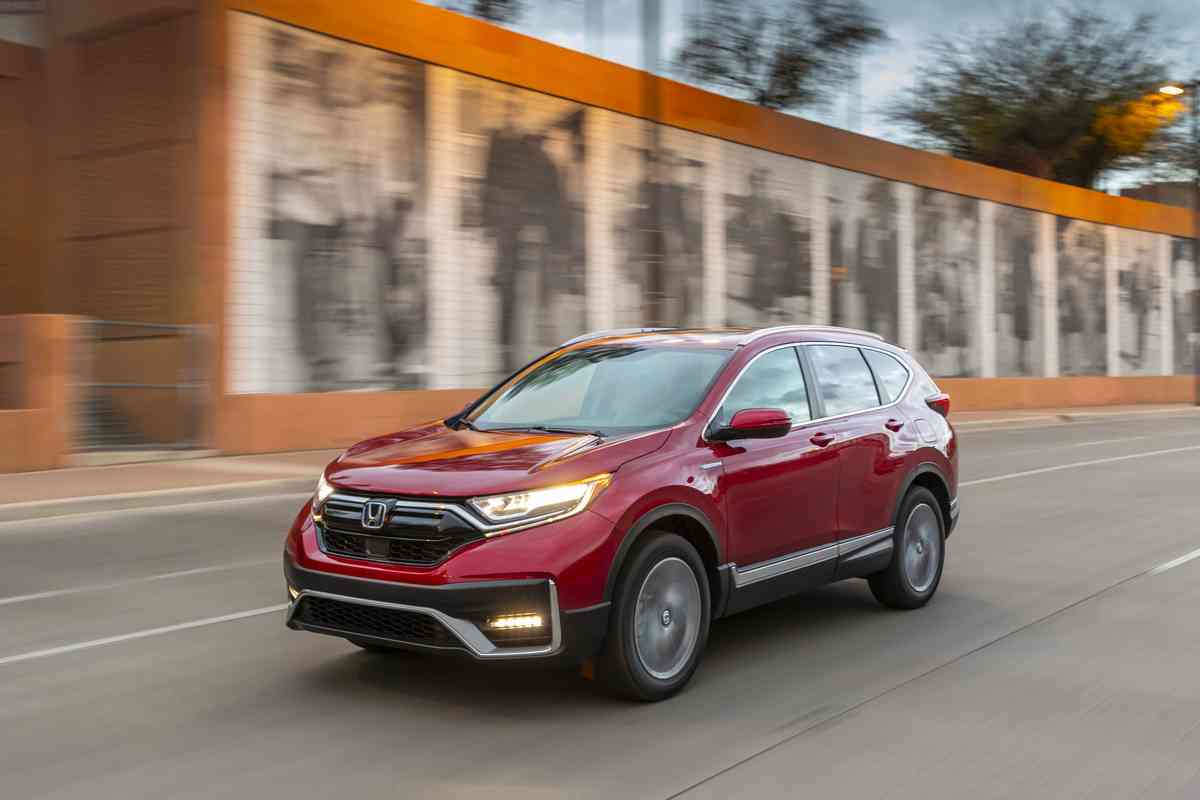Best Years for Honda CRV: A Comprehensive Guide to Top Models
Determining the Best Years for Honda CRV is the purpose of this article. As the CR-V evolved through the years and various generations, certain model years emerged as the cream of the crop, offering the best balance of performance, economy, and dependability.

Bookmark these other popular articles while you are here: Honda CR-V Reliability, What Is The Best Used Honda SUV To Buy?, and What Used SUV Holds Its Value The Best? (Expert weighs in).
Finding the best model year for a Honda CR-V requires looking at a combination of factors, including significant complaints, problems, notable models, trim levels, and advanced features.
As a potential buyer, you should also consider the handling and drive experience, ensuring that you find a vehicle that suits your needs and provides an enjoyable experience behind the wheel.
Key Takeaways
- Some Honda CR-V model years stand out for their balance of performance, economy, and dependability.
- Carefully considering factors like complaints, problems, and notable features can help determine the best model year.
- Evaluating the handling and drive experience of the Honda CR-V is essential for finding the perfect fit for your needs.
What are the Best Years for the Honda CRV?
Buyers who don’t mind older vehicles should look into the 2005-2006 CR-Vs. They are known for their reliability, strong fuel economy, and powerful engine performance. The 2015-2016 CR-Vs are regarded for similar reasons and have a few more tech-y features equipped.
Best Honda CR-V Model Years
Fuel Economy and Performance
Throughout its history, Honda CR-V has received notable accolades for its exceptional fuel economy, especially in the 2005-2006 model years.
You can expect impressive MPG ratings across various generations, with the 2020 and the newer 2021 and 2022 models achieving even better fuel efficiency thanks to their advanced engine technologies.
Many CR-V owners appreciate the balance between performance and fuel economy, with powerful engine options available for several model years to satisfy your need for exhilarating acceleration and smooth transmission.

Safety Ratings and Features
The Honda CR-V has consistently achieved high safety ratings from the National Highway Traffic Safety Administration (NHTSA). Some of the best model years in terms of safety include 2013, 2016, and the more recent 2020, 2021, and 2022 models.
These vehicles come equipped with a comprehensive suite of safety features you can rely on, including airbags, adaptive cruise control, lane departure warning, and automatic emergency braking.
Although some model years have had recalls, Honda has remained proactive in addressing concerns to ensure the safety of their customers.
Reliability Factors
In addition to fuel economy and safety, reliability is crucial when purchasing a Honda CR-V. Some of the most dependable model years are the 2005-2006, 2008-2010, 2013, and 2015-2016 models.
These years reflect a strong dependability and satisfaction track record among Honda CR-V owners.
On the other hand, you may want to stay away from the 2001-2004, 2007, 2011-2012, 2014, and 2017 models due to various engine troubles and other issues.
Comfort and Interior Features
The Honda CR-V’s reputation for comfort and a well-designed interior dates back to some of the earlier model years, like 1998 and 2001.
The 2005-2006 models are also appreciated for their comfortable seats, ample legroom, and smooth ride.
In recent years, Honda has continued to prioritize driver and passenger comfort in their CR-V lineup, with the 2020, 2021, and 2022 models offering improved noise reduction and a luxurious cabin experience.

Significant Complaints and Problems
As a potential Honda CR-V buyer, understanding the significant complaints and problems associated with certain years is important to make an educated decision.
Various CR-V models have experienced engine and electrical problems affecting their reliability.
You should be aware of the worst CR-V years based on industry reviews, NHTSA statistics, reported problems, and consumer feedback, which are 2002, 2007, 2008, 2011, 2014, 2015, 2017, 2018, and 2019 years.
Some common issues associated with these model years include:
- Engine Problems: Some CR-V models from 2001-2004, 2007, 2011-2012, 2014, and 2017 had engine issues, causing owners to face performance and reliability problems source. These problems ranged from excessive oil consumption to engine failure.
- Electrical Problems: Electrical issues like door actuator problems and A/C system malfunctions have plagued some CR-V models, particularly those from 2007 to 2009 years. Honda issued a recall to replace faulty door actuators for these specific models.
While considering purchasing a Honda CR-V, weigh these common complaints against the vehicle’s overall performance and reputation.
Bear in mind that some model years are better than others, with 2005-2006, 2008-2010, 2013, 2015-2016, and 2018-2021 standing out as the best years for the compact crossover.
By being informed about the problematic years and common issues, you can confidently choose a Honda CR-V model that suits your needs and expectations.

Notable Models and Trim Levels
When considering a Honda CR-V, knowing about the outstanding models and trim levels that have established this SUV as a reliable and comfortable choice is essential.
Honda CR-V has produced several successful years, including 2016, 2013, and 2009, earning praise for their dependability, safety, and overall performance.
Current and previous generation CR-V
The fifth-generation CR-V (2017-2023) marked a significant improvement in the lineup, providing a contemporary design, enhanced safety features, and a fuel-efficient turbocharged engine.
The fourth generation (2012-2016) introduced a more spacious interior and improved fuel economy compared to its predecessors.
EX and LX trims
Honda CR-V offers various trims for different needs. The LX trim serves as the base level, which includes standard features such as a 2.4-liter engine, 17-inch alloy wheels, and a 5-inch display screen.
A step up, the EX trim, adds robust features like a 7-inch touch-screen infotainment system, upgraded safety features, and a more fuel-efficient 1.5-liter turbocharged engine.
Pilot and Civic comparisons
While Honda CR-V has continuously shined through the years, other Honda models like the Pilot and Civic have also made their mark.
The larger Honda Pilot is a midsize SUV with three-row seating, a more powerful V6 engine, and a higher towing capacity compared to the CR-V.
Meanwhile, the Honda Civic offers a compact and sporty design, catering to those seeking a more agile driving experience compared to the CR-V.
As you explore the various Honda CR-V model years and trims, remember to remember your priorities, preferences, and budget. The right choice will depend on the specific features and performance you desire in your vehicle.

Generations of Honda CR-V
When you explore the history of the Honda CR-V, you’ll notice that it has gone through several generations, each with their own unique features and improvements.
As a compact SUV, the CR-V has been popular for over two decades, offering drivers a reliable and versatile option for various driving needs.
The first generation of Honda CR-V (1997-2001) marked the introduction of the model to the market. Launched in 1997, the CR-V initially offered only one trim, the base model LX 1. This generation received praise for its practical design, spacious cabin, and easy handling.
Despite being an entry-level SUV, this first iteration of the CR-V quickly gained a reputation for its reliability and performance.
Moving to the second generation (2002-2006), the Honda CR-V underwent several upgrades to improve its overall appeal.
Engine performance was enhanced, and the model received a revamped design that included a more modern exterior and improved interior styling.
The second generation also saw the introduction of additional trim levels, such as the EX and EX-L, offering an increased range of choices for buyers 2.
Improved safety features, better fuel economy, and added convenience options became hallmark traits of the second-generation CR-V.
Within these early generations, some specific model years stand out for their overall performance and user satisfaction.
Notably, the 2001 and 1998 models from the first generation are considered some of the best years for the Honda CR-V 3.
Additionally, buyers looking for reliable and fuel-efficient older vehicles may want to consider the second generation’s 2005-2006 CR-V models for their strong engine performance and dependability 4.
Exploring the first and second generations of the Honda CR-V will give you an understanding of how the model evolved over time to adapt to changing consumer needs and preferences.
With a legacy of reliability, fuel efficiency and performance, these early generations of the CR-V laid a solid foundation for future improvements and iterations of this popular compact SUV.
2024 CR-V Updates
Footnotes
Used Honda CR-V Buying Guide
When you’re in the market for a used Honda CR-V, you should consider a few factors to ensure you’re getting the best value for your money.
This guide will help you navigate the process and choose the perfect used Honda CR-V for your needs.
First, it’s important to determine your budget and price range for your used Honda CR-V. Research the average asking prices for different model years to better understand the cost.
Remember that older models will typically be more affordable, but they may also have higher mileage and wear.
One of the main aspects you’ll want to focus on is the model year. Several sources have pointed out that the best Honda CR-V years to look for are 2020, 2016, 2013, and 2009, as they offer a mix of reliability, performance, and affordability.
Avoid the worst years, such as 2017, 2015, and 2011, which have had more reported issues.
Next, consider the features that you value the most in a used Honda CR-V. Some models may have advanced safety features, cutting-edge technology, or luxurious interiors. Identify what’s vital to you and target those models that best meet your criteria.
When you have narrowed down your options, make sure to inspect the used Honda CR-Vs you’re considering thoroughly.
Check the vehicle’s maintenance history, and be on the lookout for any signs of damage or excessive wear. A pre-purchase inspection by a trusted mechanic can be a valuable step in the process.
Finally, don’t forget to think about the warranty. If you’re buying a certified pre-owned Honda CR-V, it will typically come with a limited warranty from the manufacturer.
However, if you’re purchasing from a private seller or a non-certified used car lot, the warranty situation may be different.
Be sure to inquire about any existing warranty coverage and explore reputable third-party warranties if needed.
By following this guide, you can confidently find a used Honda CR-V that meets your needs and budget. Always remember to take your time and make an informed decision before committing to your purchase.

Advanced Technology and Convenience Features
In recent years, Honda CR-V has incorporated advanced technology and convenience features to enhance your driving experience.
The 2020 model stands out as the best year for the Honda CR-V in terms of technological advancements.
One of the key features you’ll find in newer Honda CR-V models is a responsive touchscreen infotainment system. This system enables you to access various functions and apps with ease.
Moreover, newer Honda CR-Vs come equipped with a rearview camera, also known as the backup camera, which improves visibility and safety when reversing your vehicle.
Safety is always a priority with the Honda CR-V; newer models incorporate a forward collision warning system.
This advanced feature alerts you to potential frontal collisions, improving your and your passengers’ protection.
Bluetooth connectivity is also a standard feature in recent CR-Vs that offers hands-free calling and audio streaming, making your drives more convenient and enjoyable.
In addition to these advancements, the USB port provided in new Honda CR-Vs allows you to charge your devices and access functions like Android Auto and Apple CarPlay integration.
Furthermore, power windows are a common feature, contributing to the convenience and comfort that Honda CR-V offers to you.
In conclusion, the advanced technology and conveniences provided in recent Honda CR-V models, especially the 2020 variant, have made this vehicle a top choice for an all-around enjoyable driving experience.
With features like touchscreen infotainment, rearview camera, forward collision warning, Bluetooth,
USB port, and power windows, it’s clear that the Honda CR-V is equipped to provide you with the utmost comfort and safety, meeting the diverse needs of modern drivers.
Share Your Insights With US
Did we forget something, get something right (or wrong)? We’d love to hear your insights! Share your automotive experiences based on our article in the comments below. Your input enriches our community’s knowledge. Thanks in advance for sharing!
Handling and Drive Experience
You can expect a confident and smooth ride when handling Honda CR-Vs, especially during the best years.
The vehicle’s suspension system is designed to provide a comfortable driving experience, effectively absorbing bumps and minimizing body roll during turns.
One standout feature of the Honda CR-V is its available all-wheel drive (AWD) system. This system allows for better traction and stability in various driving conditions, such as wet, snowy, or off-road surfaces.
Coupled with a set of quality tires designed for different environments, your CR-V will easily adapt to diverse road conditions, ensuring a safe and enjoyable drive.
Another essential aspect of the drive experience is cargo space. With the Honda CR-V, you have ample room to store your belongings, making it an ideal choice for families or individuals with an active lifestyle.
With rear seats folded down, the CR-V offers a generous and versatile cargo area, providing the space you need for road trips, outdoor adventures, or just running errands around town.
In summary, the Honda CR-V consistently delivers a dependable and comfortable ride from handling to cargo space.
The available AWD system, quality tires, and well-designed suspension all contribute to a smooth and enjoyable driving experience throughout the best years for this popular compact SUV.
Conclusion
In your search for the best Honda CR-V model years, there are several years that stand out as excellent choices. The 2010 Honda CR-V is praised for its spacious cargo area, top-notch safety ratings, and comfortable cabin.
Other strong contenders include the model years 2005-2006, 2008-2010, 2013, 2015-2016, and 2018-2021, which offer reliable performance and features that have earned them positive reviews.
However, it would also be wise to avoid certain years of the CR-V. The 2001-2004, 2007, 2011-2012, 2014, and 2017 model years have been reported to experience engine problems and other issues.
Additionally, 2002, 2007-2008, 2011, 2014-2015, and 2017-2019 are considered some of the worst years due to reviews from the automotive industry, data from the NHTSA, and customer opinions.
When considering a Honda CR-V, pay attention to the available features and which model years best align with your expectations and requirements. By choosing one of the better years for a CR-V, you are investing in a reliable and comfortable compact SUV that should serve your needs well.

We just discovered something interesting to our dismay on our 2020 Honda CRV. We bought our car new in 2020. It has around 30,000 miles, mostly highway miles.
A few weeks ago, following torrential rain pours and thunderstorms in the DC area, we took our car to pick up someone at the airport.
Entering the car, we found all windows opened as well as the moon roof. Of course, the inside of the car was an absolute swimming pool, due to the rain entering.
We were trying to figure out how this could have happened.
I went on the web to see if others had experienced a similar issue.
It turns out that there is a little known feature on the Honda CRV. If you keep the keyless fob opening button pressed for too long, it will open all windows and moon roof on the CRV. What happened is that we probably triggered that opening while sitting on the keys or pressing on them.
I reproduced the event to see if it was a fluke or a real thing. Indeed, if you keep the fob entry key button on for more than 15 seconds, everything will open….
I went to the internet and found pages and pages of links relative to this particular beheviour. Is this a bug? Is this a feature? If it is, it is absolutely undocumented.
It took us days to dry the car, clean up rugs, upholstery, running AC to remove humidity and al. It is fine now, but that was a bad surprise. According to my research on the web, it happens to many if not all Honda CRVs from all years who have a key fob… I don’t know if this happens to other Honda models.
Otherwise, the 2020 CRV is a great car in all respects.
Oh wow! What a horrible experience. Yes, many cars have this feature since the early 2000’s so you can help cool your car off, but the fact Honda does not disclose the information anywhere definitely makes you wonder! Thank you for sharing this and I hope your CRV dries out okay. If if get’s musty, I have a few tricks that will help.
My wife has had a used 2002 CR-V for many years. Over 190,000 miles without a single issue. As a car enthusiast I have to say I am incredibly impressed with this suv. She has driven it cross-country and back twice. Never a problem. Hondas are remarkable. Does use a little oil but for the mileage I’m not concerned. Even my Toyota used oil. We’ll keep this CR-V till it dies!
George, I love to hear this. I agree the CR-V’s are such a good vehicle as long as you stay up on their basic maintenance like it sounds you have done.
Thanks for sharing. This will definitely help our community or readers. Especially, those who are considering purchasing a Honda CR-V.
Thanks!